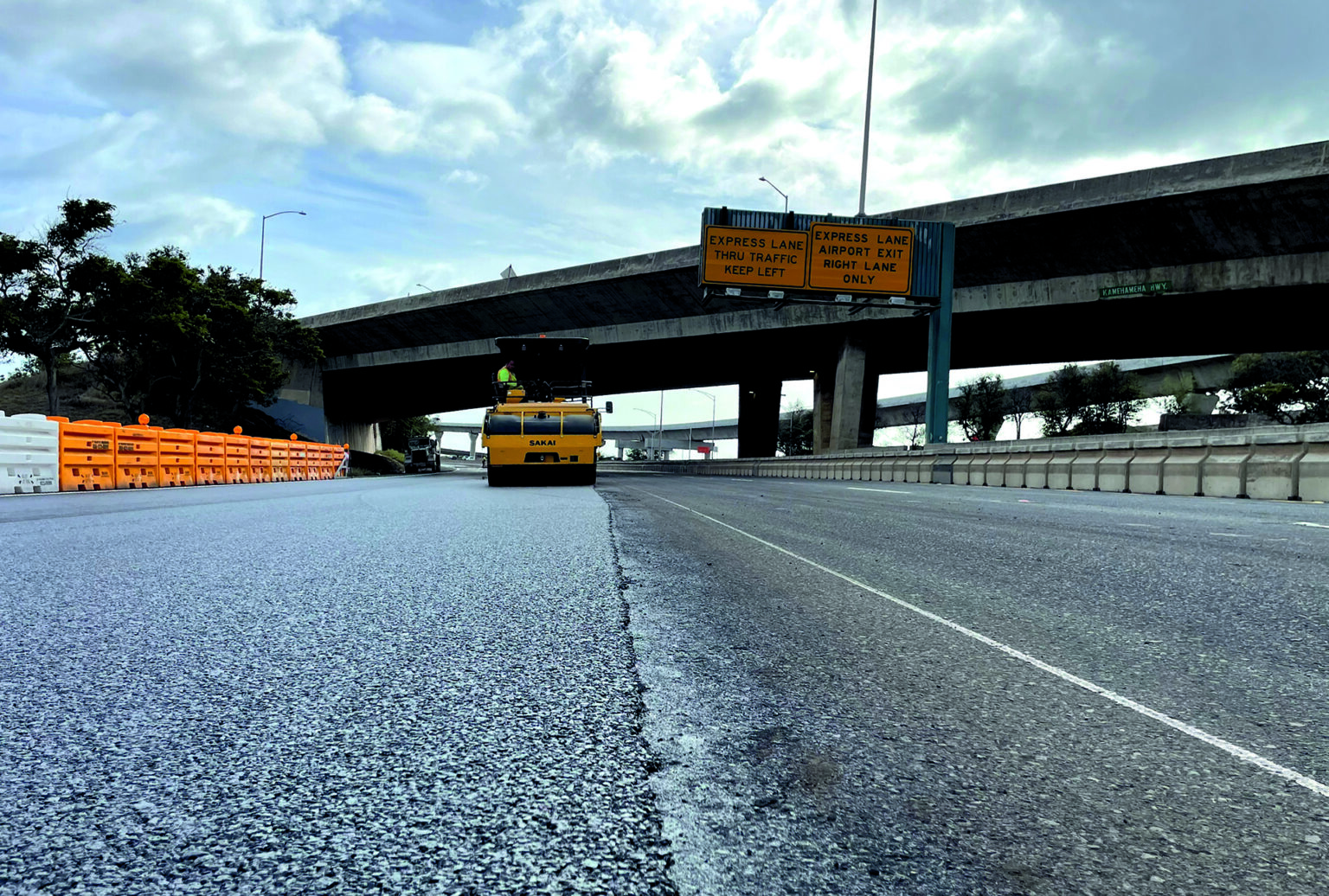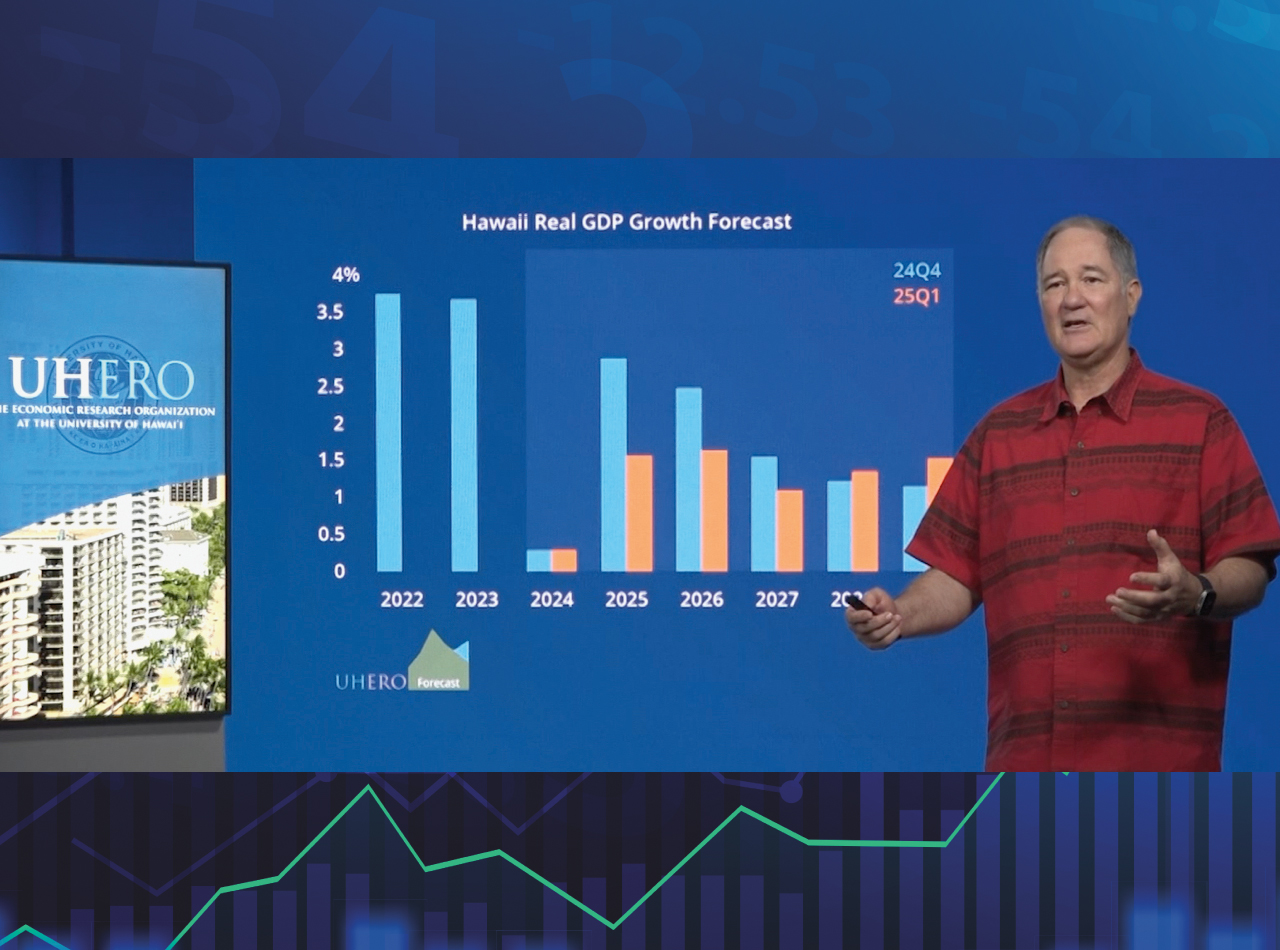
Motorists enjoying a scenic drive along Pali Highway these days might notice the asphalt beneath their wheels has no potholes, cracks or gouged-out grit to roughen the ride — just a smooth, even, satin-like surface.
They’re riding on stone matrix asphalt (SMA), a pavement mixture with an excellent record of performance that’s been tested and is now used by the Hawaii Department of Transportation (HDOT) Highways Division.
“Asphalt pavement mixes with polymer modified asphalt (PMA), [and] especially stone matrix, are the most durable and resistant to pavement deformation,” says HDOT Director Ed Sniffen. “Since 2020, [we’ve utilized] these asphalt pavements on new projects.”
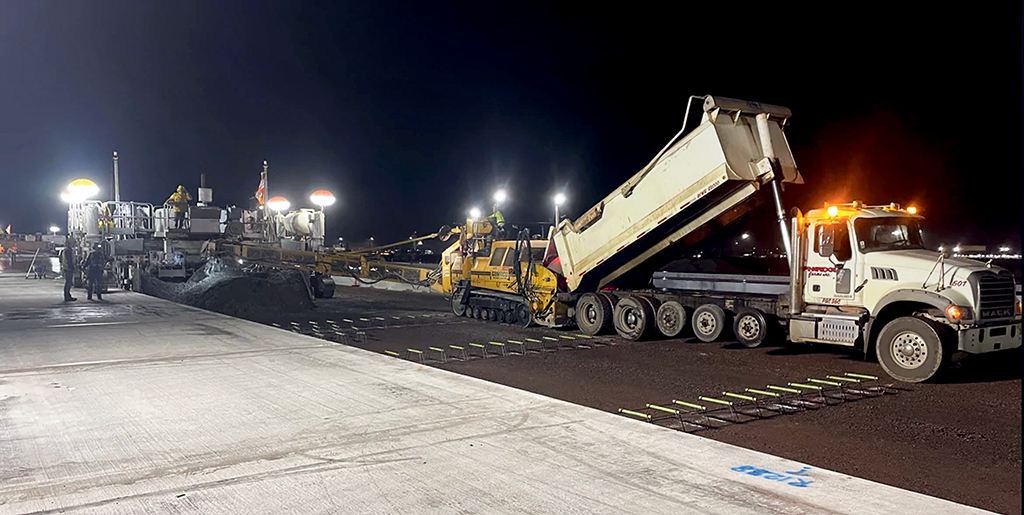
MORE OPTIONS TO CONSIDER
SMA and PMA may soon be joined on Hawai‘i roadway projects by new pavement mixtures currently being tested by HDOT. A second phase of investigation into the potential of plastic-modified asphalt includes research into the following:
• A typical HDOT asphalt mix, containing an asphalt binder modified with styrene-butadiene-styrene (SBS) polymer, as a control.
• Mixes using consumer-recycled plastic: Asphalt mixed with PMA and local consumer-recycled plastic waste, and asphalt mixed with an unmodified asphalt binder and local consumer-recycled plastic waste.
• Mixes using plastic fishnets: Asphalt mixed with PMA and fishnet plastic, and asphalt mixed with an unmodified asphalt binder and fishnet plastic.
In a first phase of testing, three different types of plastic-modified asphalt were placed in separate sections of Fort Weaver Road in October 2022 to compare their performance.
HDOT tested a traditional asphalt mix with PMA and modified with SBS polymer as a control, along with asphalt that was also polymer-modified with SBS, but which also included a topcoat of recycled plastic. Asphalt containing recycled plastic without any additional modified binder added was also tested.
In addition to testing the performance of plastic-modified asphalt, the first phase of the project was designed to identify potential downsides, such as plastic leaching from pavement into the surrounding soil.
“For the Phase 1 project, the University of Hawai‘i and Hawai‘i Pacific University have completed performance and microplastic leachate testing, and are currently working on the research report,” says Sniffen. “The research report is anticipated to be complete [by the] end of the year. HDOT is continuing to monitor field performance.
“Phase 2 construction began in April 2024 but was paused for emergency sewer maintenance work by the City & County of Honolulu in the same area. Paving will resume after the City completes sewer work.”


FEDERAL FUNDS FLOW
HDOT testing and the agency’s methodical pursuit of high-performance pavement occur just as more federal funds are targeting roadway improvements in Hawai‘i.
“To date, $2.2 billion in Bipartisan Infrastructure Law funding has been announced and is headed to Hawai‘i with over 115 specific projects identified for funding,” according to a statement from the White House in March. “Since the Bipartisan Infrastructure Law passed, approximately $1.5 billion has been announced for transportation — to invest in roads, bridges, public transit, ports and airports.”
Jon Young, executive director of Hawaii Asphalt Paving Industry, says “there appears to be an increase in asphalt paving work in 2024 as compared to past years,” adding that the state’s largest asphalt pavement projects are typically highways and airfields.
Large ongoing paving projects in 2024 include the rehabilitation of the H-1 Freeway from Salt Lake Boulevard to the Airport Viaduct, and two projects on Kaua‘i: resurfacing of Kūhiō Highway from Waikaea Bridge to Mailihuna Road, and the relocation of Runway 3-21 at Līhu‘e Airport.
Another large project, the rehabilitation of Runway 17-35 at Ellison Onizuka Kona International Airport at Keāhole, will begin in 2025.
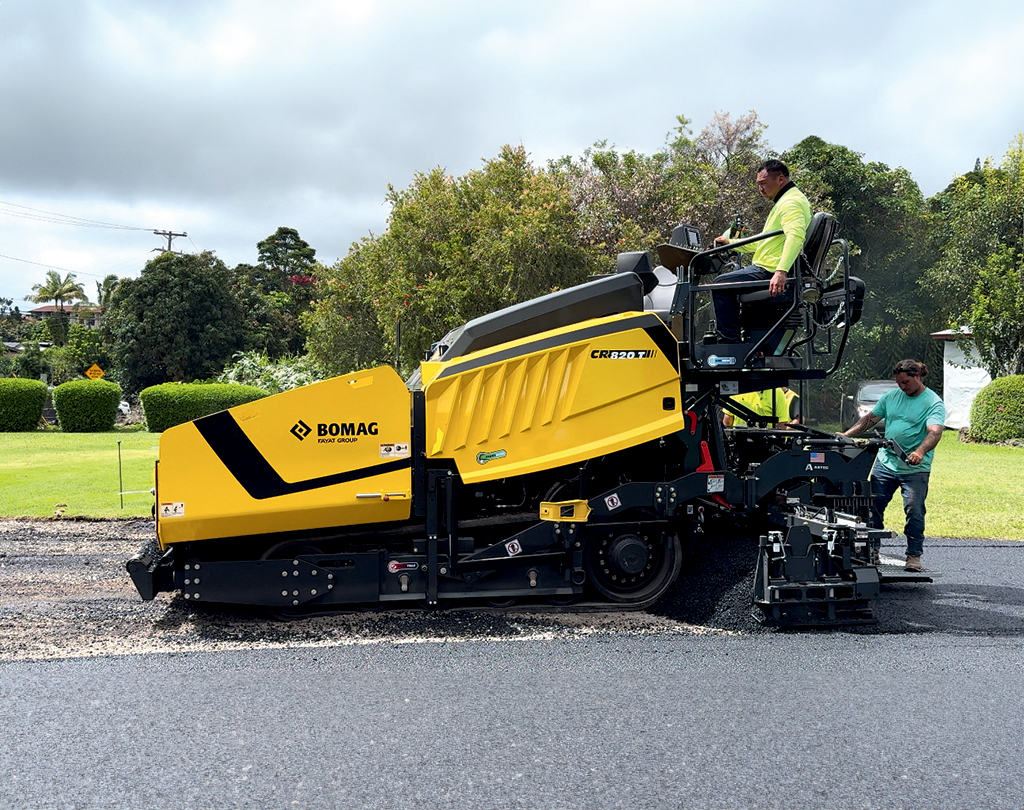
Isemoto Contracting workers on the Big Island use a new BOMAG CR820T asphalt paver purchased from Bacon Universal.PHOTO COURTESY ISEMOTO CONTRACTING CO. LTD.
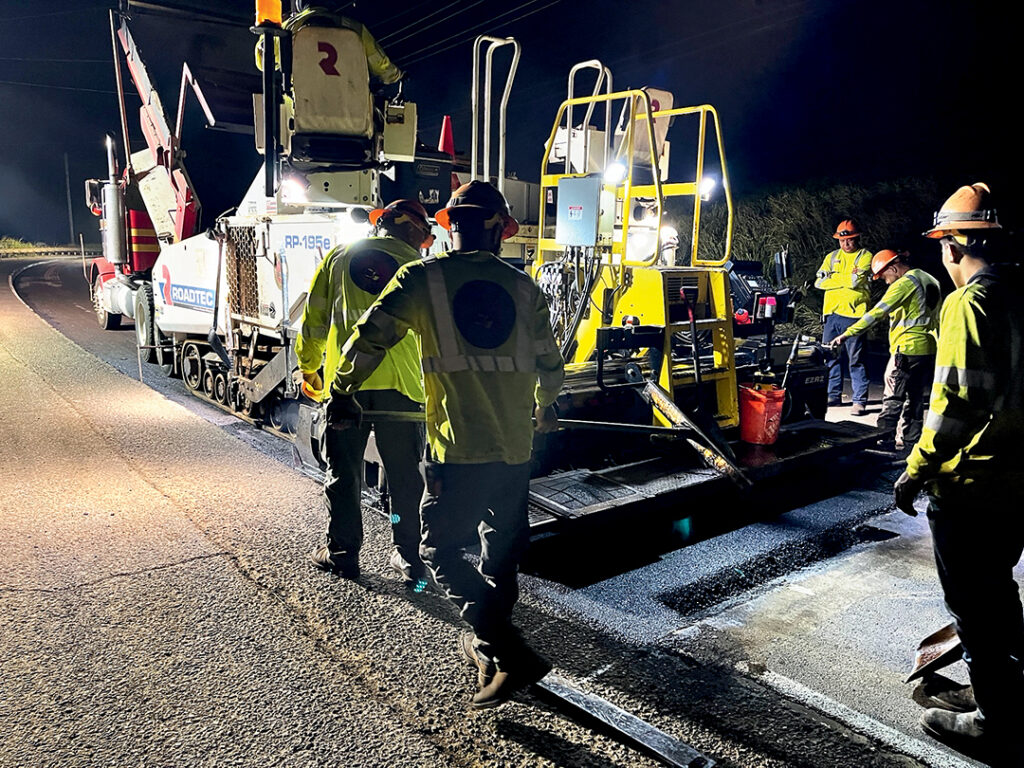
Jas. W Glover places a second lift of PMA Mix IV during restoration work on Ku-hio- Highway near Kealia Beach on Kaua‘i.PHOTO COURTESY JAS W. GLOVER LTD./DANIEL MATSUMOTO
EVEN MORE OPTIONS
Other U.S. states are also reviewing the performance of various promising asphalt mixtures, including balanced mix design (BMD).
“BMD is an advanced approach to designing asphalt mixtures that incorporates performance testing to ensure the mixture can withstand various types of pavement distress, such as rutting and cracking,” Young explains.
“Unlike traditional mix design methods that primarily focus on volumetric properties, BMD aims to balance the resistance to multiple modes of distress by considering factors such as mix aging, traffic, climate and the location within the pavement structure.”
If HDOT decides to evaluate the performance of BMD for Hawai‘i use, Young says HAPI hopes to collaborate with the agency and work towards a successful implementation of the material in the future.
HDOT is already firming up a new asphalt review, confrims Sniffen.
“We are planning to evaluate higher reclaimed asphalt pavement content in asphalt surface mix later this year,” he says.
Sakai, BOMAG Asphalt Equipment Popular in 2024

Bacon Universal Co. Inc. President and CEO Matt Elvin says his company’s best-selling asphalt equipment this year includes tandem vibratory rollers, such as the Sakai SW354W along with BOMAG CR820T asphalt pavers.
“The Sakai SW354W features 51-inch-wide drums, 4,000 VPM, and does not require DPF or Regen,” Elvin says. “The BOMAG CR820T is a highway-class asphalt paver with a maximum paving width of 20 feet and a hopper capacity of 10 tons, weighing in at 36,400 pounds. It is ideal for municipal and county roads.
“The simplicity of the Sakai rollers, such as analog switches, makes them easy to service and maintain, as well as easy to use for new operators,” he adds.
BOMAG and Sakai continuously upgrade their fleets to align with developments in asphalt installation methods and customers’ changing needs.
“A recent safety feature launched is the Sakai Guardman, which is a first for the asphalt paving roller industry,” says Elvin. “This auto brake-assist system detects personnel, equipment or objects behind the roller and automatically brakes when a collision is imminent.
“Guardman works by using a 3D LiDAR or millimeter radar that is fully integrated with the machine’s hydraulic drive and spring-applied, hydraulically released braking system. A sophisticated intelligent controller compensates for compactor speed and day and night visibility. It even works through dust and steam and can work for paving alongside walls without false alarms.
“This feature has the potential to save lives, and we expect to see it become more widely utilized during the coming year,” Elvin says.

